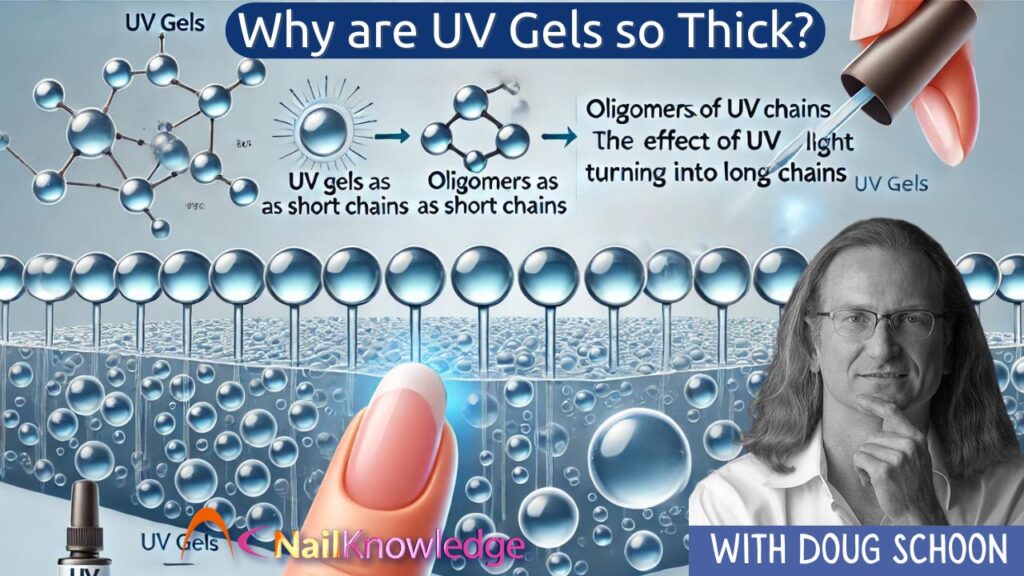We are asked this question all the time: “Why are UV gels so thick, and can anything be added to thin them out?”
While it might be tempting to modify the consistency of your UV gels, it’s important to understand the science behind their formulation. Adding anything to thin out UV gels can disrupt their chemistry, potentially leading to serious issues, including adverse skin reactions.
Los riesgos de diluir los geles UV
Nunca debe añadirse nada a los geles UV para hacerlos más finos, porque esto puede alterar la química y afectar negativamente a la curación. El resultado podría ser un mayor riesgo de desarrollar una reacción cutánea adversa, incluido el potencial de reacciones alérgicas permanentes.
La importancia de no añadir disolventes a los geles UV
Never add solvents or any type of thinner to a UV gel unless instructed to do so by the manufacturer’s directions or improper cure becomes a greater possibility. If instructed by the manufacturer to do so, precisely follow those directions or problems can occur.
Por qué los geles UV son espesos: el papel de los oligómeros
The base ingredients are called “oligomers” which are molecules that have been partially pre-polymerized into short chains. These short chains are more prone to be tangled, than small molecules, which makes the product feel thicker or more “viscous”. Then when UV gels are exposed to UV energy, these short chains join to create the very long chains that solidify to create the final polymer coating.
Esto se hace para que el gel UV pueda curarse más rápidamente de lo que lo haría normalmente. Es muy parecido a precocinar la comida para poder terminarla más rápidamente en el microondas. Los oligómeros son la razón por la que estos productos son más gruesos que otros tipos de esmaltes de uñas y la adición de disolventes para diluirlos dará lugar a la creación de un esmalte de uñas significativamente más débil.


